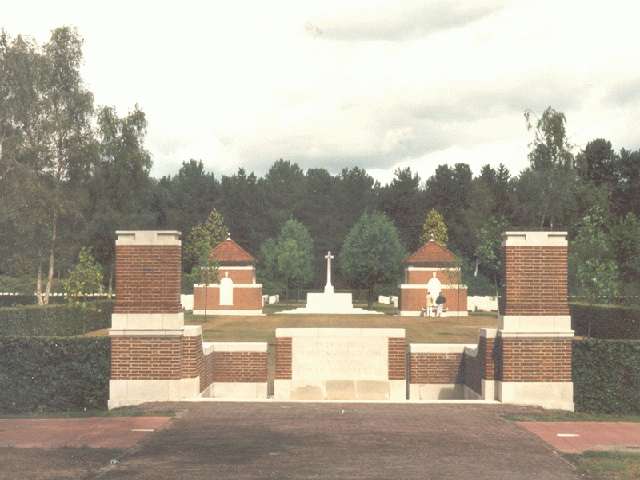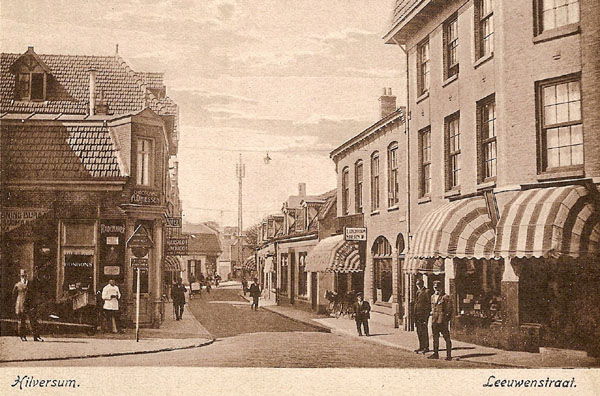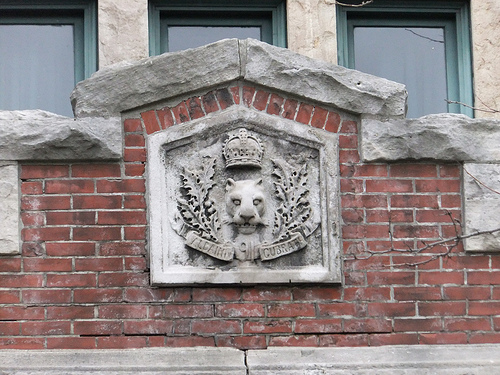Excerpt from Chapter 9, Canada via
Berlin, page 236:
By special invitation, a detachment from the 10th
Canadian , Infantry Brigade attended the celebration of
the anniversary of , the liberation of the town of
Selzate in Belgium, which the Argyll's had cleared of
the Germans on 18th September, 1944. Commanded by Major
Bob Paterson of the Argyll's, the detachment included
one officer and 15 men from each of the Algonquin
Regiment, the Argyll and Sutherland Highlanders of
Canada (P.L.), the 29th Canadian
Reconnaissance Regiment (South Alberta
Regiment) and the 22nd Canadian Armoured Regiment
(Canadian Grenadier Guards). The
group of Argyll's was made up entirely of men who fought
in the action and effected the liberation.
The detachment was honoured in Selzate by a special
service at the Cenotaph, where plaudits were read by the
Burgomaster and various other civic officials. Local
Underground leaders were introduced, as well as the two
girls who swam the canal on the day of liberation to
present flowers to Major Paterson and others of his
company. Also presented was one "Germaine", who had
aided in evacuating the two Argyll's who had been badly
wounded and later died: Wreaths were then laid on the
graves of these two heroes, L/Sgt. Terse V. Gray of "A"
Company and Pte. Paul J. Cole of the Scout Platoon, who
gave their all for Freedom, as the inscription read. The
service ended at 1230 hours.
Excerpt from Chapter 9, Canada via
Berlin, page 237-238:
At 1400 hours, the Canadian detachment,a Polish group, a
company of the East Yorkshire Regiment and two platoons
of the 6th Infantry Battalion, 11th (American) Armoured
Division, gathered before the Town Hall, where further
speeches were delivered. A grand parade followed with
the Argyll's in the lead immediately behind a Belgian
military band. The parade consisted of troops, costumed
civilians, bands and many picturesque floats. The
onlooking crowd numbered up to 50,000, who had come to
Selzate for the .occasion from many of the outlying
communities liberated by 10th Brigade and the Poles. The
official ceremony ended at 1730 hours with the
presentation of illuminated scrolls to Major Paterson
and to the Officer Commanding the Polish troops and with
the playing of no fewer than six National Anthems.
Bergen op Zoom Memorial
Service

Bergen op Zoom Cemetary

Another similar celebration in which a
group of the Argyll's took part was held at Bergen op
Zoom on 27th October, 1945. Forty Argyll's headed by
Lt.-Col. Coffin and Major Pete McCordie, with an equal
number from the South Alberta Regiment, the British
Columbia Regiment, the Lincoln and Wetland Regiment, the
Algonquin Regiment and the New Brunswick Rangers arrived
in Bergen op Zoom at 1730 hours on the 26th to
participate next day in a great celebration to
commemorate those Canadians who died in the liberation
of the town. The party was met by the town's brass band
and representatives from the Burgomaster's office. After
playing "O Canada" and the Dutch National Anthem, the
procession marched to the Town Hall, where addresses by
the Burgomaster and the chairman of the local
Underground Committee were delivered. On the following
day, the 27th, at 0845 hours the troops, led by the
pipes and drums of the Argyll's followed by the civic
brass band, marched to the cemetery. Flowers were placed
on the graves of the Canadian dead while the band played
the Canadian National Anthem. In the afternoon at a
march past Lt.-Col. G. D. Wotherspoon, D.S.O., Acting
Brigadier of the 4th Canadian Armoured Brigade, took the
salute. Afterwards a crab pin was given to each Canadian
soldier, making him an honorary citizen of the town.
From Nijverdal to
Hilversum



The
Pipes and Drums in Holland while waiting to come home,
1945.
(Front, L-R) A. Ednie; E. MacKie; P/M F.A. Noble; RSM
P.C. McGinley; Lt.Col A.F. Coffin, DSO; Maj J.A. Farmer;
D. Armitt; J. Reid; A. Scott
(Centre, L-R) D. Macfarlane; F. Bryant, M. Miller; Wm.
Millar; A. Bale; R. Gillespie; J. Scott; D. Cuthbertson;
J. Ross
(Back, L-R) J.B. McQueen; G.K. Monas; J. Carter; J.
McComb; J. Black; J. Stout; E. Pacey
Thanks for this photograph to
Roderick Noble (the
son of Pipe-Major Frank Noble of the Argyll and
Sutherland Highlanders of Canada).
In late September the Battalion moved
from its billets in Nijverdal to winter quarters in
Hilversum. The move was made over several days a company
at a time, the Battalion Headquarters closing at the
former place on the afternoon of the 23rd and opening at
Hilversum the following morning. With the end of the
Japanese war and the necessity of sending Canadian
troops to the Far East eliminated, more shipping became
available to transport troops from Europe to Canada and
with such ships as the "Queen Elizabeth", the
"Aquitania" and the "Ile de France" released for this
purpose, the repatriation programme was greatly
accelerated. The happy result was that in December the
Argyll's at last commenced their long journey home.
Leaving Hilversum late that month, the Battalion moved
by motor convoy to the transit camp at Nijmegen, there
to pause for a few days and then move on to Ostende for
the crossing to Dover. The Battalion left its vehicles
at Nijmegen and thereafter continued its journey by rail
and boat.
To England


It was good to see England again and
thrilling to travel on the speedy little British trains,
this time taking the Battalion to Haslemere. Leaves were
granted in England over the period of several weeks
intervening while awaiting embarkation orders. Finally
on 21st January, 1946, the Argyll's moved to Southampton
and there boarded the "Ile de France" for Canada.
Back Home to Canada

The
S.S. Ile de France
Details on the Ile de
France:
The SS Ile de France was a French ocean liner built
in Saint-Nazaire, France for the Compagnie Générale
Transatlantique. The ship was the first major ocean liner built
after the conclusion of World War I and was the first liner ever
to be decorated entirely with designs associated with the Art
Deco style. It was neither the largest ship nor the fastest
ship, but was considered the most beautifully decorated ship
built by the Compagnie Générale Transatlantique (CGT, known also
as the "French Line") until the Normandie.
At the war's beginning, the Ile de France was berthed
at its New York pier. Since the French were not anxious to
return the ship to its homeland, it was towed to Staten Island
by ten tugs and was laid up after special dredging that cost
$30,000. Its crew of 800 persons was reduced to a security staff
of 100 while it was inoperative for the next five months. Then
during March 1940, commanded by the British Admiralty, to which
it had been lent, the ship was loaded with 12,000 tons of war
materials, submarine oil, tanks, shells, and several uncrated
bombers that were stowed on the aft open decks. On 1 May 1940
she departed for Europe, veiled in gray and black. From there,
it traveled to Singapore where, after the Fall of France, it was
officially seized by the British. During 1941 she returned to
New York and made several crossings from the northeast as a
troop ship such as the one on February 14, 1944, sailing from
Halifax, Nova Scotia, to Greenock, Scotland, carrying among
others the 814th Tank Destroyer Battalion at the end of the war
the Ile de France was used to ferry American and Canadian
troops home.

After a crossing characterized by rough
weather and storms, the big liner docked at Halifax on
the 26th to discharge her 10,000 troops to the waiting
trains on the flag-bedecked quaysicle. The Argyll's came
ashore at 1300 hours on the 27th and were soon speeding
westward by train for Hamilton.
As there would be no opportunity for the
1st Battalion itself to withdraw the Regimental Colours
it had deposited five years earlier in Central
Presbyterian Church for safekeeping until its return
from the war, authority was granted the 2nd Battalion to
withdraw the Colours so that they might be carried on
the last parade of the 1st Battalion before it dispersed
on demobilization. Appropriate preparations had been
made by the citizens of Hamilton and by the 2nd
Battalion to welcome the homecoming Argyll's and when at
1930 hours on Tuesday, 29th January, their train emerged
from the tunnel and pulled into the T.13. & B. Station,
a huge crowd was there to greet them with tumultuous
cheers in the bright sunshine of a crisply fine winter
morning.
On the station platform to greet Lt.Col.
Coffin and his Battalion, were Lt.-Col. Coffin Osborne,
Honorary Lieutenant-Colonel of the Regiment; Lt.Col. H.
D. Fearman, D.S.O., V.D., commanding the 2nd Battalion,
and Controller Andrew Frame, representing His Worship,
the Major. Outside the station were the Regimental
Colours; a Colour Guard, the pipe and brass bands of the
2nd Battalion and thousands of cheering citizens.

The Canadian Argyll's home in Hamilton
Excerpt from Chapter 9, Canada via
Berlin, page
239:
The Colour Party consisted of two
officers, one warrant officer and two sergeants of the
1st Battalion, who had arrived home ahead of the unit,
while the Colour Guard comprised three officers and 100
other ranks, the right half personnel of the 1st
Battalion who had preceded it and the left half from the
2nd Battalion. As the 1st Battalion emerged from the
station led by its pipes and drums, the Colour Guard
presented arms in tribute to the returning heroes and
the crowd cheered lustily.
The order of march for the parade to the
Armouries was as follows : 1st Bn. Pipes and Drums, 1st
Bn. Headquarters, 1st Bn. "A" Company, 1st Bn. "B"
Company, (interval) 2nd Bn. Brass Band, Colour Party and
Colour Guard, (interval) 2nd Bn. Pipes and Drums, 1st
Bn. "C" Company, 1st Bn. "D" Company. To the Regimental
March; "The Campbells are Coming", the Battalion marched
proudly down James Street to the Armouries between
cheering throngs of citizens lining either side of the
street and beneath showers of ticker tape and confetti
as it passed through the heart of the city, over Main
Street, King Street and past the City Hall.
Excerpt from Chapter 9, Canada via
Berlin, page
240:
The Colours were then played off parade
by the combined pipes and drums of the 1st and 2nd
Battalions. "God Save the King" was played by the brass
band and then the Colour Guard marched away.
With full hearts and proud memories the
1st Battalion had come to the end of their road, a long
road marked with the tropical green of Jamaica, splashed
with red from Fala se to the Hochwald and Friesoythe,
and in the heart of the German Reich covered with the
sodden grey of a desolate capital. To end a great
experience through the War of Liberation came the last
command of the Commanding Officer:
"1st Battalion, The Argyll and Sutherland
Highlanders of Canada (Princess Louise's), DISMISS!"